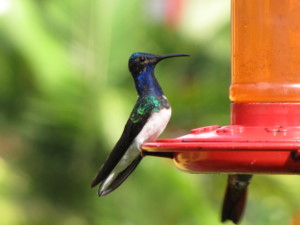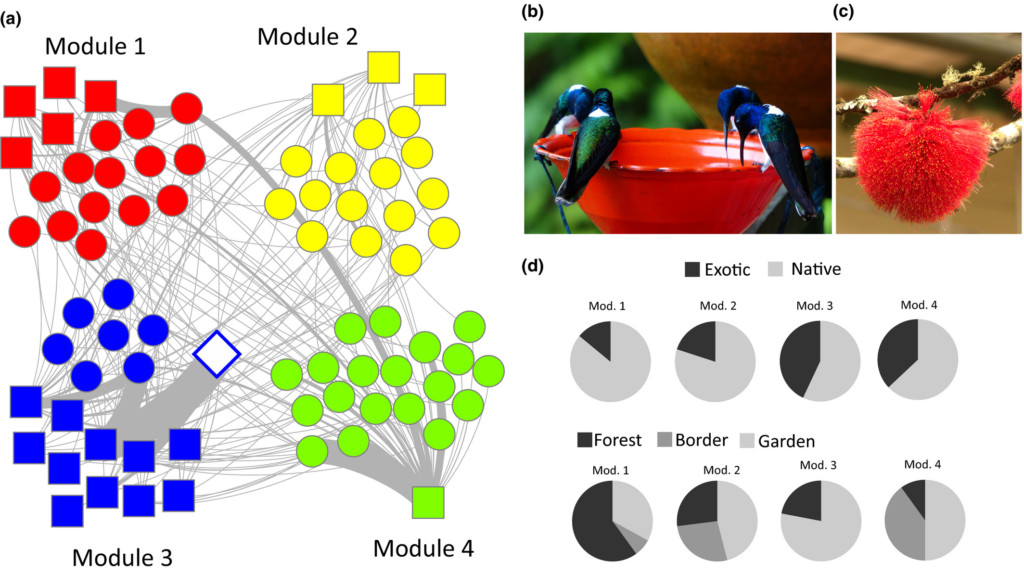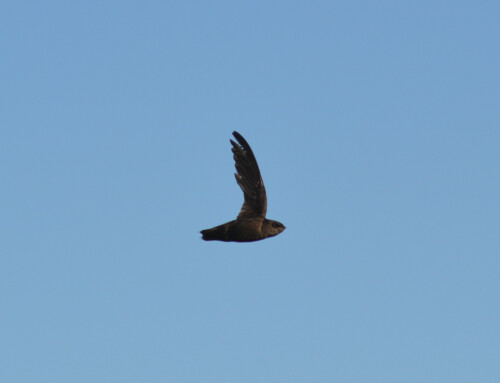 LINKED PAPER
LINKED PAPER
Nectar provision attracts hummingbirds and connects interaction networks across habitats) as a tool for amateur researchers. Ramírez‐Burbano, M. B., Amorim, F. W., Torres‐González, A. M., Sonne, J., & Maruyama, P. K. 2021. IBIS. DOI: 10.1111/ibi.12988. VIEW
Not all human intervention in nature is bad. The provisioning of food resources, for instance, can have a positive impact on local wildlife (Cox et al. 2018). Think of flower strips for pollinators in agricultural areas or artificial feeders for garden birds. In a recent study, Mónica Ramírez-Burbano and her colleagues focused on a private property in Colombia, adjacent to the Andean cloud forest. In this area, the researchers found that the human-provided resources, such as artificial feeders as well as ornamental plant species, can be beneficial for hummingbirds and the plants that they feed on. The findings even suggest that gardens are potential tools in nature conservation (Doody et al. 2010, Webb & Kabir 2009).
Morphological matching
The study took place in ‘Finca Zíngara’, a private property on the eastern slope of the Colombian Andes. In a garden patch within this area, the researchers quantified the number of hummingbird visits and identified all the exotic and native plant species. Video recordings indicated that 20 hummingbird species visited 55 different plant species in the area. A closer look at these bird-plant interactions revealed that hummingbirds preferred to feed on flowers that fit their bill morphology. This phenomenon – known as ‘morphological matching’ – is commonly observed in natural communities, suggesting that the artificial environment does not significantly affect the natural behaviour of the birds (Maglianesi et al. 2014, Tinoco et al. 2017).

Figure 1. (a) A hummingbird-plant interaction network with hummingbirds depicted as squares and plants as circles. The diamond indicated artificial feeders. The interactions could be divided into four ‘modules’. Most hummingbirds visited (b) the artificial feeders and (c) the endemic tree species Zygia lehmannii. Figure (d) provides more details about the distribution of exotic and native plants across the area.
Ecotourism
In addition, the researchers found that an endemic and endangered tree species (Zygia lehmannii) was visited most often by the hummingbirds, second only to the artificial feeders. Interestingly, the trees only flowered in the garden and not in the surrounding forest areas. The survival of this species might thus depend on the human-made gardens and the hummingbirds that visit them. This situation provides interesting opportunities to combine nature conservation with ecotourism, as the researchers highlight in their paper: “[N]ectar supplementation with feeders for sustainable ecotourism could be accompanied by an encouragement to use native flora to attract hummingbirds and other pollinators, supporting the conservation of species and their interactions while providing benefit for local landowners.”
References
Cox, D.T.C. & Gaston, K.J. (2018). Human–nature interactions and the consequences and drivers of provisioning wildlife. Philosophical Transactions of the Royal Society B: Biological Sciences 373: 20170092. VIEW
Doody, B.J., Sullivan, J.J., Meurk, C.D., Stewart, G.H. & Perkins, H.C. (2010). Urban realities: The contribution of residential gardens to the conservation of urban forest remnants. Biodiversity and Conservation 19: 1385– 1400. VIEW
Maglianesi, M.A., Blüthgen, N., Böhning-Gaese, K. & Schleuning, M. (2014). Morphological traits determine specialization and resource use in plant-hummingbird networks in the Neotropics. Ecology 95: 3325– 3334. VIEW
Tinoco, B.A., Graham, C.H., Aguilar, J.M. & Schleuning, M. (2017). Effects of hummingbird morphology on specialization in pollination networks vary with resource availability. Oikos 126: 52– 60. VIEW
Webb, E.L. & Kabir, M.E. (2009). Home gardening for tropical biodiversity conservation. Conservation Biology 23: 1641– 1644. VIEW
Image credits
Top right: White-necked Jacobin (Florisuga mellivora) | Alejandro Bayer Tamayo | CC BY-SA 2.0 Wikimedia Commons
Blog posts express the views of the individual author(s) and not those of the BOU.
If you want to write about your research in #theBOUblog, then please see here





